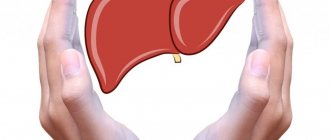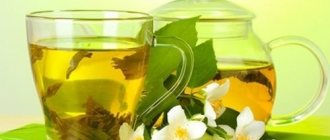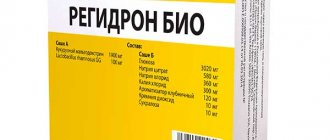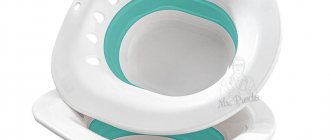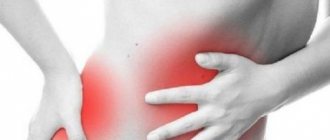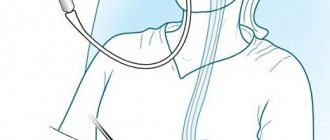Liver tubing is a complex of therapeutic measures carried out during flushing of the liver, gall bladder and ducts. During the procedures, stagnant bile is removed.
This technique is also called blind probing. Stagnation of bile is the culprit in the formation of cholesterol and pigment stones; in addition, the stagnant secretion becomes a favorable environment for the development of representatives of pathogenic flora.
The procedure initially involves taking choleretic drugs and warming the liver, after which the body is cleansed through multiple bowel movements.
Simultaneously with the stagnant secretion, toxins, various parasites and waste products formed during the life of the body are removed from the liver.
Usually, one procedure is not enough to achieve the expected result. Beginners are recommended to conduct cleaning courses once every 3-4 months. After the annual period of systematic cleansing courses, their number can be reduced to one every 6 months.
The most accessible method for patients is to perform liver tubing with mineral water at home. Tubing the liver at home with mineral water allows you not only to cleanse the body of stagnant bile, but also to improve its health.
In order to know how to properly perform liver tubing, you need to study the indications and contraindications for the procedure, as well as the mechanism for its implementation and how many days should be treated.
This procedure, carried out at home, is considered one of the available methods of maintaining the liver in a healthy and functional state for a long time.
After completing a full course of cleaning the organ, a person’s general well-being improves, sand is removed from the gallbladder and the normal functioning of the digestive system is restored. In addition, the person experiences normalization of blood pressure.
How to do liver tubing at home?
Tubage is carried out only after cleansing the intestines of toxins and old feces. Accordingly, you first need to undergo a course of hydrocollon therapy or cleanse using special food products.
Types of liver tubage:
- Rosehip
- Sorbitol
- Magnesia
- Cognac and castor oil
- Chicken eggs
- Physical exercise
The procedure option is selected depending on the presence of chronic diseases and allergies. For some patients, inpatient cleaning is recommended.
liver tubing at home
Your feedback, comments, questions
- Alena
Until the age of 27, she did not worry about the health of her liver, nothing bothered her, she felt good. After reducing the amount of fat in the diet (I began to eat less butter, cottage cheese, cheese), after about two months I felt pain on the right side. I started studying the information and realized that it was most likely the gallbladder. I went for an ultrasound, the doctor confirmed that the bile had become thicker and a suspension had appeared. Choleretic drugs were prescribed. And they also recommended doing a liver tube. The article describes the methods and options well. I made it with rose hips. Everything went fine, I felt unpleasant after the procedure, but soon everything returned to normal.
How to do liver tubing with magnesium?
Magnesia – magnesium sulfate, is a laxative and an excellent cleanser. It helps strengthen muscles. Often prescribed during pregnancy and for patients with heart disease.
Instructions for performing magnesium tubing:
- Dissolve a spoonful of magnesia salt in 250 ml of warm boiled water
- Carry out the procedure on a weekend evening
- Drink the prepared solution 3 hours before bedtime, lie down on the sofa, and place a warm heating pad in the liver area
- After 30-90 minutes you will feel the urge to defecate
Severe diarrhea is possible 2 hours after taking magnesium.
If you experience rectal bleeding after taking magnesium, call 911. You should not use magnesium tubing if you have kidney failure, constipation, colitis or long-term use of other laxatives.
liver tubage with magnesium
Possible complications
If tubing is performed for the first time, there is a risk of complications. They can arise due to the identification of various ailments that were not previously diagnosed in a person.
Some people may develop severe hypoglycemia after the procedure. The first symptoms may appear within an hour after drinking mineral water.
In a patient, hypoglycemia may manifest itself in the form of the following symptoms:
- drowsiness;
- increased sweating;
- dizziness;
- speech is incoherent;
- panic.
To help a person and restore his normal state, glucose levels should be brought back to normal. Simply take a piece of sugar into your mouth and slowly dissolve it. To prevent this problem from appearing again during tubing, you need to drink a glass of water during cleaning, first with sugar dissolved in it (1 tablespoon).
In rare cases, toxicosis may occur, which develops as a result of disturbances in the microflora in the intestines. As a result, the body is actively exposed to harmful substances present in the body.
In this case, the following symptoms may occur: constipation, high blood pressure, headache. Adsorbents will help normalize the condition. By taking any of them, the condition returns to normal after 2 hours. If toxicosis appears, it is not recommended to repeat the procedure.
If an ultrasound was not performed before tubing, and there are stones in the gallstone, then a blockage of the duct may appear. In this case, you need to urgently seek medical help, because the situation can only be corrected and the duct cleared through surgery. If the problem is not resolved in a timely manner, there is a risk of developing peritoneal peritonitis.
Tubing at home will be useful only if a full examination is carried out, contraindications are excluded and all stages are strictly followed. Mineral water will help cleanse the ducts, remove stagnation and normalize the general condition of the human body.
How to make a liver tube with mineral water and sorbitol?
Sorbitol is a sugar substitute of plant origin. This substitute attracts water, therefore it is a choleretic, diuretic and laxative.
Instructions for tubaging with mineral water and sorbitol:
- Buy Essentuki mineral water No. 4 or No. 7. Shake the bottle and open it, leave it for an hour to release the gas
- Dissolve a spoonful of sorbitol in a glass of liquid
- Cleaning is carried out early in the morning. Lie on your right side and place a heating pad under it
- Drink the prepared liquid and rest for 1.5-2 hours
- After this time, you will feel the urge to defecate.
- Repeat the procedure 2 times a week for 2.5 months
This cleansing can be done by people with diabetes, since sorbitol has virtually no effect on blood glucose levels.
Liver tubage with mineral water and sorbitol
Who is contraindicated for
Absolute contraindications to liver dubage are:
- pregnancy and lactation throughout all its stages;
- chronic diseases of internal organs;
- gastric diseases and duodenal disease.
It is necessary to postpone the procedure if at the time of starting liver cleansing you feel unwell, have a fever, or have signs of a cold or flu.
How to tubage the liver with rose hips?
- Rose hips are medicinal fruits that have a choleretic and diuretic effect.
- You need to prepare the cleaning solution in advance, in the evening.
- You need to pour 30 g of crushed rose hips into a thermos and pour 500 ml of boiling water
- The thermos is closed and left overnight
- In the morning, filter the broth and add a spoonful of xylitol or sorbitol.
- After getting up, drink a glass of broth and go to bed for 2 hours with a heating pad.
- During these 2 hours you need to drink the rest of the solution
- You can have breakfast only after defecation
- The first meal should be light and contain a minimum of fat
- Cleaning is carried out every 2 days six times
Liver tubing with rose hips
Types of tubage
Experts recommend using only those liver cleansing methods that are recognized by official medicine. The principle of physiotherapy is the same for all methods - taking a choleretic drug with parallel heating of the bladder and liver. The effectiveness of tubage depends on the choice of cholekinetic agent.
With physical activity
Active tubing combines physical activity with the use of choleretic drugs. Before physiotherapy, you need to heat 750 ml of mineral water and drink it at once. After this, exercises are performed to stimulate bile drainage and cleanse the liver:
- general warm-up – 10 minutes;
- tilts left and right – 10-15 repetitions;
- rotation of the body - 7 times left and right;
- squats with arms raised up – 15 times;
- swing your legs - 10 times on each leg.
After physical activity, do breathing exercises for 1-2 minutes. Then drink another 500 ml of warm mineral water and repeat the set of exercises. After tubing is completed, the urge to defecate occurs within 10-50 minutes.
With mineral water
Dubazh for cleansing the liver with mineral water is one of the most effective and simple methods of bile removal. To stimulate digestion and the outflow of bile, table medicinal water is used - Borjomi, Essentuki-4, Nagutskaya-26, Smirnovskaya, Narzan, etc. For viral inflammation of the liver, sulfur-alkaline water is recommended - Sernovodskaya, Goryacheklyuchevskaya.
Tubage is performed according to the following scheme:
- after sleep, drink 250 ml of heated still water;
- take a horizontal position, lying on your back;
- apply a heating pad with hot water to the liver area;
- over the course of 1-1.5 hours, drink another 300-500 ml of water.
In case of stagnant processes in the bladder, the procedure is performed once every 3 days. For preventive purposes, tubage is repeated once every 2 months.
Video recipes
With sorbitol
Before performing liver tubing at home, you should consult your doctor. Physiotherapy is not used in case of exacerbation of inflammation in the liver.
To speed up the movement of bile into the small intestine, a sugar substitute - sorbitol - is often used. It has antispasmodic properties, so it not only normalizes bile drainage, but also relieves pain in the side.
Tubage rules:
- add 1 teaspoon of sorbitol to 250 ml of heated mineral (boiled) water;
- drink the solution in the morning immediately after waking up;
- lie on the left side, placing a rubber heating pad on the liver area;
- warm up the tissue for 1.5-2 hours.
It is not advisable to use sorbitol if you have irritable bowel syndrome or fructose intolerance.
With magnesia
Magnesium tubage is a classic way to cleanse the liver. The essence of the technique is as follows:
- after sleep, take 2 tablets of No-Shpa;
- add 1 tbsp to a glass of warm boiled water. l. magnesia;
- drink the solution on an empty stomach;
- lie on the left side;
- place a heating pad on the right hypochondrium for 1 hour.
If the procedure for the liver is carried out correctly, defecation occurs 20-50 minutes after cleaning. The greenish color of stool indicates the presence of bile acids.
With olive oil
Olive oil and lemon juice are often used to improve bile drainage. 2-3 hours before treatment, you can eat 150-200 g of vegetables after heat treatment. To cleanse the liver, prepare the following solution:
- mix olive oil and lemon juice in equal proportions;
- heat the mixture to 39-40°C;
- drink 200 ml of solution in one gulp.
After taking a choleretic drug, a heating pad is applied to the liver. This procedure is contraindicated for people with high stomach acidity.
With infusions of choleretic herbs
During tubage, a collection of herbs is often used to cleanse the liver of toxic substances and bile pigments. To improve bile secretion, infusions from the following plants are used:
- peppermint;
- dandelion;
- corn silk;
- immortelle;
- calendula;
- yarrow.
Liver preparations are sold in pharmacies. To prepare a choleretic infusion, you should:
- 2 tbsp. l. pour herbal mixtures into a thermos;
- pour 1 liter of boiling water and leave overnight;
- strain and drink 250 ml of liquid before the procedure.
The remaining infusion is drunk in small sips while the liver is warming up.
1 more video recipe
With chicken eggs
Chicken yolks are used to speed up the flow of bile and restore liver function. The procedure is carried out according to the following scheme:
- take 2 chicken eggs and 1-1.5 liters of mineral water (still);
- The yolks are separated from the whites and drunk on an empty stomach;
- after 20-25 minutes, drink 500-750 ml of water;
- While warming up, drink the remaining water.
Tubazh with yolks is recommended for dyskinesia of the bile ducts. Therapy is performed no more than once every 3-5 days during an exacerbation of the pathology.
Other options
The effectiveness of physiotherapy depends on the correct choice of a choleretic agent. To reduce the viscosity of bile, improve the motility of the bladder and bile ducts, use:
- Rosehip infusion. A handful of dry berries is poured into a thermos and ½ liter of boiling water is poured. After 8-9 hours, filter the infusion and add 1 tbsp. l. sorbitol
- Oatmeal jelly. 3 cups of oats are mixed with 50 g of lingonberry leaves and 80 g of birch buds. Pour the mixture into 4 liters of non-hot boiled water and leave for at least a day. Boil over low heat for 20-25 minutes, adding 40-50 g of knotweed and corn silk. The boiled broth is infused for at least 45-60 minutes.
- Mineral water with honey. 1 liter of Borjomi or Essentuki-4 is poured into a saucepan and left overnight to remove gas. Add 100 ml of melted honey to the water. Bring to 40°C and drink 500-600 ml before warming the liver.
Probeless tubing is a therapeutic technique that requires strict adherence to dosages. Irrational use of choleretic drugs is fraught with diarrhea and dehydration. Therefore, gastroenterologists do not recommend resorting to therapy more than once every few days during exacerbation of diseases of the biliary system.
How to make a liver tubage with olive oil?
Cleaning is carried out together with lemon or cranberry juice. The acid promotes the production of bile. You should not eat three hours before the procedure. The day before the procedure, drink more hot drinks and soups.
Instructions for tubaging with olive oil:
- Measure out a glass of juice and olive oil
- If 3 hours have passed since eating, take a sip of oil, then a sip of juice
- Lie down in bed and attach a heating pad to your right side
- Drink the contents of the glasses one sip at a time, alternating between liquids.
- After defecation, try to stay home or go to bed
- The procedure is carried out 2 times a week, 5 times in a row
liver tubing with olive oil
Tubage under the supervision of a doctor at the DiLuch sanatorium
Tubage is not a harmless procedure. Incorrect actions and neglect of contraindications can cause complications. As a result, the child may experience nausea, abdominal pain, and diarrhea.
Avoiding side effects and performing tubing as competently as possible is only possible under the supervision of an experienced specialist from the DiLuch medical institution. The procedure is preceded by an ultrasound examination, which determines the position, shape, size of the gallbladder, and the presence of pathology. Tubing under medical supervision will exclusively benefit the child’s health.
What is blind liver tubing?
- Blind liver tubing is a cleaning without the use of a probe. That is, mineral water, medicinal herbs and drugs that enhance the flow of bile are used to carry out the procedure.
- Previously, the tubing procedure was carried out in a hospital setting. To do this, it was necessary to swallow the probe through which the liquid was supplied
- The procedure was unpleasant, but it made it possible to cleanse the liver under control. Most often, during tubage, an ultrasound scan of the liver was performed to look at the cleaning procedure
- Now you don’t need to do this, because you can do blind tubing at home
blind liver tubage
Contraindications
In order not to harm your health, you need to know in what cases tubing may be contraindicated. Restrictions for the procedure are:
- infectious diseases of the liver, gallbladder or its ducts (cholangitis);
- diabetes;
- active bleeding (including menstrual flow in women);
- calculous cholecystitis, cholelithiasis, cholelithiasis;
- acute diseases of the gastrointestinal tract and renal system;
- neurosis;
- physical exhaustion (for example, after a strict diet or fasting).
Tubage is contraindicated in case of fever, elevated temperature and general deterioration of health. After any type of tubage, you are allowed to eat only light food that does not contain large amounts of fat and chemical additives.
Tubage is an effective method of complex treatment of diseases of the hepatobiliary system, accompanied by impaired bile outflow. The procedure has many contraindications, so before performing it you should consult a doctor and undergo a comprehensive examination.
How often can a liver tubage be performed?
Cleansing the gallbladder and liver is necessary in courses. 1-2 procedures are not enough. Usually tubage is carried out 15 times at intervals of 1 or 2 times a week.
Do not overdo it; before the procedure, make sure there are no stones in the gall bladder. This can be done using ultrasound.
Ultrasound before liver tubage
When is gallbladder tubing necessary?
Before evacuating the contents of the bladder during tubing, it is necessary to determine the causes, clinical signs and possible complications of cholemic syndrome.
Causes of cholestasis:
- Hereditary pathologies and congenital developmental anomalies.
- Biliary dyskinesia (motor-tonic dysfunction of the ducts and sphincter of the gallbladder).
- Bends and bends of the ducts.
- Unbalanced nutrition, overeating - the triad of fatty foods: the predominance of fried, fatty, spicy foods.
- Inflammatory process in the wall of the hollow organ and liver due to the development of infection.
- Stricture of the sphincter of Oddi (upper, lower).
- Chronic diseases of the pancreas.
- Postoperative complication after gastric resection according to Billroth-2.
- After truncal vagotomy with perforation of the ulcer or bleeding.
- After cholecystectomy (removal).
- Malignant oncological diseases.
Cholemic syndrome is caused by the entry of individual components of bile into the blood due to a violation of the formation and outflow. Before proceeding with gallbladder tubing, you need to make sure there are indications. The latter are based on the general clinical picture.
Read also: Prevention of dysbiosis using folk and pharmacy remedies
Objectively, patients experience skin itching, ectericity of the sclera, changes in the shade of the skin and mucous membranes, and hypovitaminosis of fat-soluble vitamins. Cholestasis is often accompanied by vomiting (which does not bring relief), nausea, and loss of appetite. Xanthomas and xanthelasmas can form on the skin.
Patients report fatigue, general malaise, and a slight increase in temperature.
If you have Ker's symptom or heaviness in the right hypochondrium, it is recommended to visit a gastroenterologist and conduct a special diagnosis of cholecystography.
The laboratory test results will indicate:
- increase in the level of direct fraction of bilirubin,
- excessive amounts of bile acids and alkaline phosphatase,
- increase in cholesterol,
- increase in AlAt, AsAt,
- urine the color of dark beer (pathognomonic symptom),
- discoloration of stool (acholic stool in the absence of stercobilin),
- steatorrhea (presence of fatty inclusions in stool).
Cholestatic insufficiency is characterized by a high risk of concomitant pathologies and the risk of complications. The demand for cleaning the biliary system (tubage) increases every year.
Consequences and complications of impaired bile outflow:
- cholecystitis (acute, chronic, calculous, acalculous),
- cholelithiasis (GSD),
- obstructive jaundice (obstructive),
- choledocholithiasis (presence of stones in the ducts),
- cholangitis,
- cicatricial strictures of the major duodenal papilla,
- hydrocele,
- indigestion.
What should be the diet after liver tubing?
You should stick to your diet for another week after tubing. It is advisable that plant foods predominate on the menu. It is advisable that these are raw vegetables and fruits.
Do not fry or stew food. Limit your intake of animal fat. You can eat meat, but it is lean. Chicken breast, offal, rabbit, veal are suitable for this. Consume dairy products in small quantities.
By eating this way, you will be able to lose weight over the entire tubage course, since for several months you will have to eat exclusively plant foods and low-fat dishes.
nutrition after liver tubage
Aftercare treatments
To consolidate the result, you should definitely adhere to some dietary rules. If you have an appetite after the procedure, you can eat something light and low-fat. It is better to start eating with freshly squeezed juice from an apple, carrot or beet.
An approximate menu for the day when the tubing was carried out should be as follows:
- In the morning, an apple, a vegetable salad.
- For lunch, chicken broth with meatballs.
- In the evening, boiled lean chicken and salad.
For 3-4 days after the procedure, you should exclude dairy products, fatty meats, baked goods, smoked foods, and alcohol-containing drinks from your diet.
Ways to do liver tubing: reviews
The easiest way to transfer tubage is with rose hips. The effect is the same from tubage with vegetable oil or mineral water with sorbitol. But drinking olive oil is disgusting and may cause nausea. Drinking rosehip decoction is much more pleasant.
Features of liver tubage:
- A few days before and after the procedure, eat more vegetables and fruits
- Select a day off for the procedure
- After taking oil, magnesia or sorbitol, acute pain may occur, so before the procedure, take 2 antispasmodic tablets (Spazmolgon, No-Shpa)
- Do not drink alcohol or take medications after the procedure
- Tubage will negate the use of antibiotics. If you are undergoing treatment with antibacterial drugs, postpone tubing
Liver tubing
Cleaning the liver at home is acceptable in the absence of serious health problems. Tubage cannot be performed if there are stones in the gallbladder.
Duodenal sounding (intubation tube)
This is an instrumental technique for stimulating the motor function of the gallbladder using irritant drugs and a duodenal probe. Irritating substances can be injected directly into the rectum or intravenously (stream or drip). The drugs irritate the walls of the gallbladder, increasing their tone and causing muscle contractions, and also relax the sphincter of the common bile duct, formed at the junction of the pancreatic (cystic) and hepatic ducts. This facilitates the excretion of bile into the proximal small intestine, from which it is collected into a duodenal tube and can be used for a comprehensive diagnosis of biliary tract pathologies.
How to prepare
Duodenal intubation is a very unpleasant procedure, during which the patient experiences severe discomfort and tension. Severe painful sensations are usually absent, and their appearance is regarded as an unfavorable diagnostic sign, which may be a symptom of inflammatory and ulcerative lesions of the gastrointestinal tract. A person may mistake for moderate pain a feeling of pressure and fullness, accompanied by gagging and occurring when swallowing an olive - a metal or plastic tip with several holes.
Preparing the patient on the eve of the procedure includes diet and medication adjustment. 1-2 days before duodenal tubage (probing) of the gallbladder, the patient must exclude from the diet any foods that increase gas formation, for example:
- raw fruits;
- vegetables with a high content of starch and puric acid (potatoes, cabbage, radishes, spinach, radishes, turnips);
- black, rye bread, as well as bakery products with bran;
- whole milk;
- kefir;
- carbonated drinks.
For dinner on the eve of the study, cottage cheese casserole with fruit puree or chicken or fish soufflé is perfect.
Important! Medicinal preparation includes taking drugs from the group of m-anticholinergics (for example, 0.1% Atropine solution). 8-12 hours before, you need to drink 200-220 ml of warm water in which wood or birch sugar (xylitol) is dissolved.
How does tubage work?
The tubing procedure in a hospital setting begins with marking. First, using a centimeter, the distance from the patient’s upper jaw to the umbilical line is measured, and a special mark is applied to the probe. This is necessary so that the doctor can control when the olive ends up in the stomach (when the probe reaches the applied mark). If the procedure is performed under fluoroscopic control, marking is not required.
After this, the patient is placed behind the root of the tongue, which he must slowly swallow during the deep inhalation phase. When the probe is in the stomach, the patient is placed on the right side, and a hot heating pad wrapped in thick cloth is placed in the area of the right hypochondrium. At the same time, gastric contents are aspirated. The procedure can last up to 1-2 hours until the probe is in the duodenum. For pyloric spasm, intravenous administration of the drugs “Atropine” or “Papaverine hydrochloride” (in the form of a 2% solution) is indicated.
The end result of the procedure is the collection of secreted bile, which takes place in three stages.
Portions of bile during duodenal intubation
| A portion | What it is | Type of bile |
| Portion A | It is released through a probe after the olive enters the duodenum. | Transparent, has a light yellow tint. |
| Portion B | Collected after the introduction of an irritant (magnesium sulfate 25%, sodium bicarbonate solution 2%, etc.). | Thick, concentrated, dark brown or olive in color. |
| Portion C | The final portion is released after the gallbladder is emptied. | Transparent, without impurities. |
